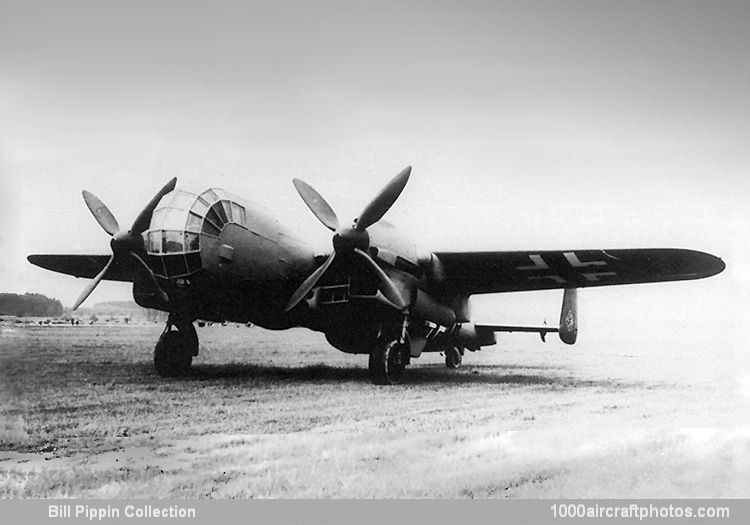Instead of using a normal turbocharger or supercharger, for the Do 217 P V1 the Höhen-Zentrale Anlage (Central Elevation System) was used. The HZ-Anlage consisted of an in the fuselage installed Daimler-Benz DB 605T aircraft engine, which drove a two-stage supercharger that provided high pressure air to the main engines on the wings. Large intercooler radiators were slung beneath the wing, between the fuselage and the engine nacelles, and air scoops for the blower and DB 605T engine were located below the fuselage, just aft of the wing trailing edge. This system offered a total of 3,500 hp for take off, 3,720 hp at 6,900 ft (2,103 m), and 3,240 hp at 18,700 ft (5,700 m). For climb and combat a total of 2,880 hp was available at 45,000 ft (13,716), and maximum cruising power at the same altitude was 2,640 hp.
The Do 217 P V1 was flown for the first time in June 1942, and during the course of flight trials attained an altitude of 43,960 ft (13,400 m). Two additional prototypes, the Do 217 P V2 and V3, joined the test program during the summer and autumn of 1942, these differing from the V1 primarily in having extended outer wing panels which increased overall span to 80 ft 4.5 in (24.50 m) and gross wing area to 720 sq.ft (66.89 sq.m). By the beginning of 1943, three pre-production Do 217 P-0 reconnaissance-bombers were under construction, the first of these being flown during the early summer and the remaining two being completed during the autumn, all three being flown to the E-stelle Rechlin near Berlin late in 1943 for official evaluation.
Tbe Do 217 P-0 was primarily a reconnaissance aircraft intended to operate at altitudes at which it would be immune from interception, and its defensive armament, which comprised a pair of forward-firing MG 81 machine guns and a similar pair of weapons firing aft above and below the fuselage, was only intended for use at lower altitudes owing to the problem of sealing the gun openings. A single Rb 20130 camera was installed in the fuselage immediately aft of the pressurized compartment, and two automatic Rb 75/30 cameras were mounted in the aft end of the center fuselage. For the bombing role it was proposed that two 1,102 lb (500 kg) bombs should be slung from racks under the outboard wing panels, and for long-range reconnaissance sorties these racks were to be occupied by 238 gal (900 l) auxiliary tanks.
The trio of Do 217 P-0 aircraft, to which the following data relate, was exhaustively tested at Rechlin, but plans for quantity production failed to materialize."
